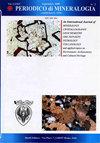OHAR: Optimized Human Action Recognition Paradigm using Optimized Type 2 Neuro-Fuzzy Classifier
IF 1.2
4区 地球科学
Q3 GEOCHEMISTRY & GEOPHYSICS
引用次数: 1
Abstract
Human activity recognition (HAR) is made to identify actions and goals of persons one or more from the images which contain sequence of actions related on environments and actions. However, different issues and challenges are increased in the applications of human activity recognition for improving detection accuracy with different activities. Hence, Optimized Human Action Recognition Paradigm (OHAR) is developed. In the paper, optimized type 2 fuzzy classifier is designed to classify human actions from the image database. The input video is transformed into multiple region in the initial stage. The collected frames are sent to the pre-processing stage for removing noise from frames. After that, the key frame is selected from the image frames by using the Structural Similarity Index (SSIM). Once key frames are selected, the three feature extraction methods are utilized like Space-Time Interest (STI) points, grid shape feature, and coverage factor. Finally, the proposed classifier is proceeding to human activity recognition with selected features set. Here, an optimized type 2 neuro-fuzzy classifier is used for detecting human action. The proposed classifier is enhanced Rider optimization algorithm (ROA). The presentation of proposed method is evaluated based on statistical computations such as accuracy, sensitivity, specificity, recall, and F_Score.使用优化的2型神经模糊分类器的优化人类动作识别范式
人类活动识别(HAR)是从包含与环境和动作相关的动作序列的图像中识别人的一个或多个动作和目标。然而,在人体活动识别的应用中,为了提高不同活动的检测精度,增加了不同的问题和挑战。因此,优化人类行为识别范式(OHAR)被开发出来。本文设计了优化的2型模糊分类器,对图像数据库中的人体动作进行分类。输入视频在初始阶段被变换成多个区域。采集到的帧被送到预处理阶段去噪。然后,利用结构相似度指数(SSIM)从图像帧中选择关键帧。选定关键帧后,利用时空兴趣点、网格形状特征和覆盖因子三种特征提取方法进行特征提取。最后,利用所选择的特征集进行人类活动识别。在这里,一个优化的2型神经模糊分类器被用来检测人类的行为。提出的分类器是改进的Rider优化算法(ROA)。基于统计计算,如准确性、灵敏度、特异性、召回率和F_Score,对所提出的方法进行了评估。
本文章由计算机程序翻译,如有差异,请以英文原文为准。
求助全文
约1分钟内获得全文
求助全文
来源期刊

Periodico Di Mineralogia
地学-地球化学与地球物理
CiteScore
1.50
自引率
14.30%
发文量
0
审稿时长
>12 weeks
期刊介绍:
Periodico di Mineralogia is an international peer-reviewed Open Access journal publishing Research Articles, Letters and Reviews in Mineralogy, Crystallography, Geochemistry, Ore Deposits, Petrology, Volcanology and applied topics on Environment, Archaeometry and Cultural Heritage. The journal aims at encouraging scientists to publish their experimental and theoretical results in as much detail as possible. Accordingly, there is no restriction on article length. Additional data may be hosted on the web sites as Supplementary Information. The journal does not have article submission and processing charges. Colour is free of charges both on line and printed and no Open Access fees are requested. Short publication time is assured.
Periodico di Mineralogia is property of Sapienza Università di Roma and is published, both online and printed, three times a year.
 求助内容:
求助内容: 应助结果提醒方式:
应助结果提醒方式:


